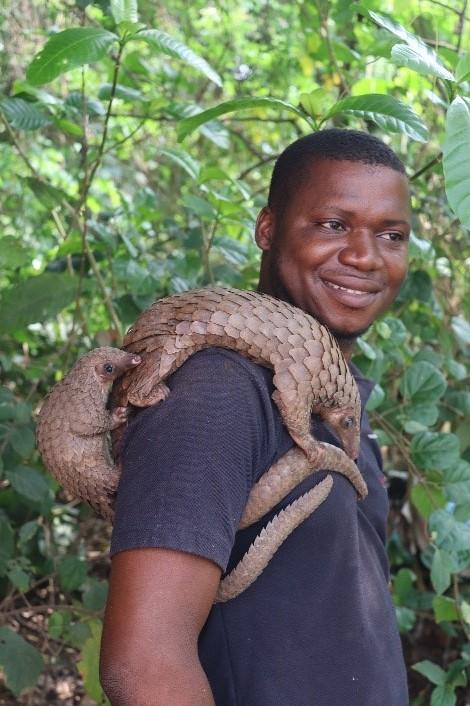Stanislas Zanvo
Other projects
8 Dec 2016
Emerging Zoonotic Diseases and Habitat Conservation: A Psychological Model of People’s Commitment to Conserve Forest Islands in the Dahomey Gap
16 Jun 2022
Ecology and Conservation of the White-Bellied Pangolin in the Swamp Forest of Lokoli in Benin (West Africa)
15 Mar 2024
Assessing Post-Release Ecology of White-Bellied Pangolins Rescued from Illegal Trade in the Dahomey Gap using both Radio Telemetry and Camera Trapping
Biodiversity conservation, particularly for species targeted by international trafficking, requires significant resources (Miller et al. 2025), which are not always available in developing countries. This need for substantial resources is all the more important for threatened species, such as pangolins, which face unprecedented poaching pressure for local consumption and trade, as well as international trafficking (Challender et al. 2020; Tinsman et al. 2023). In West Africa, a current hub of pangolin trafficking (Tinsman et al. 2023), even the purported link between pangolins and the severe COVID-19 pandemic has not deterred people from trading and consuming them (Gaubert et al. 2024).

Stan with a female white-bellied pangolin and her pup. © Stanislas Zanvo.
In the above-described context, combined with a large deficit of resources, effective conservation of the Dahomey Gap lineage (DGL) of the white-bellied pangolin requires spatial prioritisation of interventions in a vast area such as the Lama Forest Reserve, which is under severe pressure from poaching, habitat degradation, and climate change. One solution already tested with success for rhinoceroses in a similar context within Kruger National Park is the creation of an Intensive Protection Zone (IPZ), which enhances security measures to protect pangolins from poaching, bushfires, habitat degradation, etc., and where the DGL can thrive and populations can recover (Le Roex et al. 2020).
Despite the unprecedented poaching, there is no data on the poaching hotspots of the DGL and virtually no field-based information on workable and accessible alternatives to pangolins as bushmeat and raw materials for traditional medicine that could be promoted among stakeholders. This lack of evidence-based standards represents a significant barrier to implementing effective interventions that balance conservation goals. In addition, there is little outreach or education regarding the impacts of poaching on the DGL to encourage collective behaviour change.
Our project aims to operationalise an Intensive Protection Zone for the white-bellied pangolin in the Lama Forest using data from recent camera trapping, radiotracking, and forest inventories, and to promote alternatives to pangolins in the poaching hotspots rigorously identified through LEK-based interviews in wildlife markets and rural areas. In addition, rescue and release interventions and behaviour change communications will be carried out across the poaching hotspots to promote pangolin conservation.